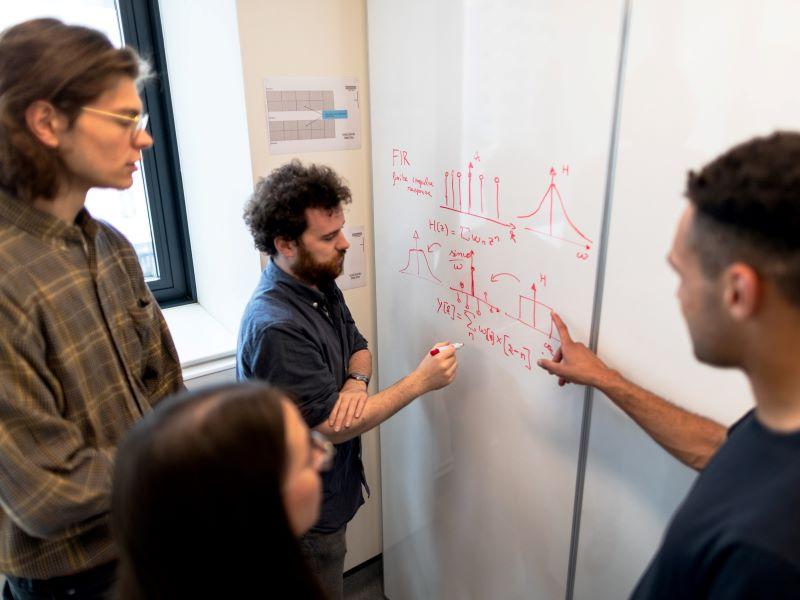Anyone who has navigated working on a school project with a group of relative strangers is likely very familiar with the myriad frustrations that can arise. From students not pulling their weight, to steamrollers taking over, to folks who leave everything to the last minute – we’ve all been there.
As women in science, we are aware of how gender identity characteristics can come into play. While research has shown that men and women participate differently in STEM course activities, these differences seem to not be due to students’ preferences. Instead, researchers posit that a lack of structure for group work makes way for stereotypes and implicit biases to impact how students engage with each other.
- Group work: improving communication, participation and dynamics
- Do we need equity or equality to make things ‘fair’? Actually, we need both
- How to enhance students’ participation in teamwork that is not assessed
Fortunately, instructors can set up group work to head off inequities relating to gender bias or anything else and address frustrations before they happen, thus paving the way for equitable, effective and enjoyable group work experiences for all.
Here are a few research-based suggestions about what we, as instructors, can do to make group work more equitable.
Incorporate group work skills practice into your course
Make group work an explicit goal of the course.
Acknowledge that group work skills take time and effort to practise, and emphasise their value in future courses and careers.
Encourage students to reflect on past group work experiences.
Many students have had prior positive group work experiences outside the classroom. Reflecting together on previous experiences can be a valuable place for groups to begin discussing how they would like to operate.
Communicate the importance of group work beyond the classroom.
Using examples from your discipline, tie classroom group work skills to examples of collaboration in the workplace. Have students articulate ways in which group work will manifest in their future careers.
Grade groups and individuals.
Grading the group’s performance as a whole encourages students to work together and builds individual accountability. This accountability can lead to frustration, so be sure to include opportunities for individuals to receive independent grades as well.
Give students points for effective group work.
Require students to complete group work-related assignments. For example, have groups develop team contracts that articulate expectations for each other and how they will be held accountable. Revisiting the contract is an excellent first step to empower group members to resolve conflicts.
Have students evaluate their contributions to the group and then evaluate the contributions of their group mates. A mid-course evaluation can be shared with the group anonymously, with warning, to provide feedback for moving forward. On shorter time scales, groups can provide collaboration statements for each activity they work on together, indicating how each group member contributed.
Structure the group work.
Do not leave groups to their own devices. Ensure that groups produce multiple deliverables throughout the project. You can also implement brief team check-ins with the instructor or written progress reports where students articulate what they have been doing, their progress on milestones, and how each member has been contributing.
Form student groups intentionally
Thoughtful group formation is dependent on the project or class. A priority may be to group students with similar interests or to group students with complementary but differing skill sets. Run a survey at the start of your course to obtain information about students’ prior experiences, interests and preferences for their group work, and group them accordingly. Here are a few things you can include in the survey and how to form the groups accordingly.
Diversify role preferences, interests and prior experience
Students have diverse interests and expertise that are relevant to the many tasks involved in group work activities. Importantly, these diverse preferences do not seem to differ between men and women, despite observations that students take on distinct roles. Ask about what types of roles students prefer, with those roles tailored to the project. Groups likely would benefit when composed of students with a range of role preferences and interests.
Consolidate group work preferences.
Ask about whether students prefer to have a leader in the group, to take leadership, to divide tasks or work together on tasks. For longer-term projects, find out whether they like to get work done early or up against a deadline. Groups likely would benefit when composed of students with similar group work preferences, although perhaps don’t form groups in which every student wishes to be a “leader”.
Consider demographic group composition.
Previous research suggested that groups should be composed such that women and under-represented and minoritised (URM) students are not isolated. This is likely beneficial on average, but should not be a hard-and-fast rule, given that many students do not prefer a particular demographic composition of their group. One recommendation is to ask students about demographic composition preferences and group them accordingly.
Supporting working with friends
Students love being able to work with their friends; so if the preference to work together is mutual, let them. Ask students to list any peers they want to work with as well as peers they don’t want to work with. You’ll learn a lot about the social circles in your class.
Natasha Holmes is Ann S. Bowers assistant professor and Kira Treibergs is a postdoctoral researcher, both at Cornell University.
If you found this interesting and want advice and insight from academics and university staff delivered directly to your inbox each week, sign up for the THE Campus newsletter.




comment